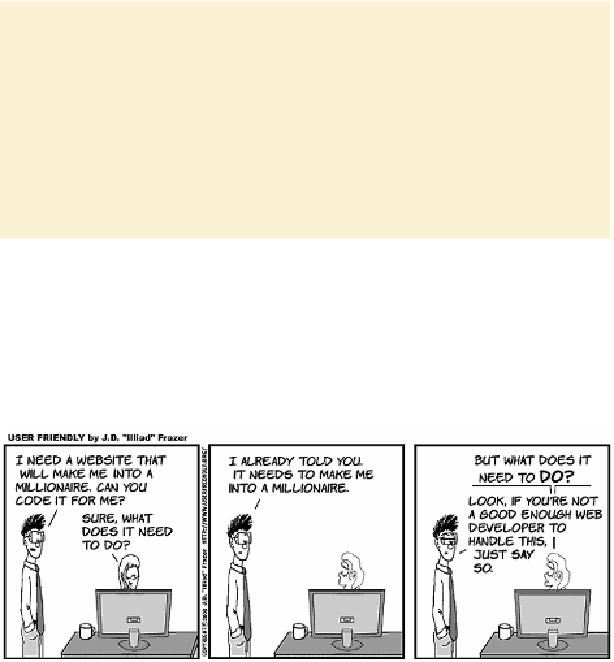HTML and CSS Reference
In-Depth Information
(continued)
the standard in order to provide feedback about its practicality. It isn't unusual
for a standard to revert to a WD several times after becoming a CR.
Proposed Recommendation (PR)
—
After some practical implementation
experience has been gained, preferably at least two independent and
interoperable implementations, the standard can advance to the PR status.
This is an opportunity for final review within the W3C. The standard is either
approved by the Advisory Committee and advances to a full Recommenda-
tion, or it returns to WD status for further work.
❂
W3C Recommendation (R)
—
As before, when published as a Recommenda-
tion, the standard is ready for widespread deployment.
❂
After the frantic pace of releases in the second half of the 1990s, things
slowed down for
HTML
. The
DOM
Level 2 spec was published in late
2000, followed by
DOM
Level 3 in 2004.
CSS
saw a major revision to
2.1 in February 2004, but it didn't see full support in
IE
until the ver-
sion 8 release in March 2009.
Microsoft, no longer under much pressure to advance
IE
other than to
add features that would be useful within the company's own products,
drastically reduced the resources devoted to its development. One of
the few features added in this period was the
XMLHTTP
ActiveX con-
trol (equivalent to a plug-in) as a standard component of
IE5
. The
XMLHTTP
object allowed JavaScript to make an asynchronous
request back to the server to get new data without the user loading a

